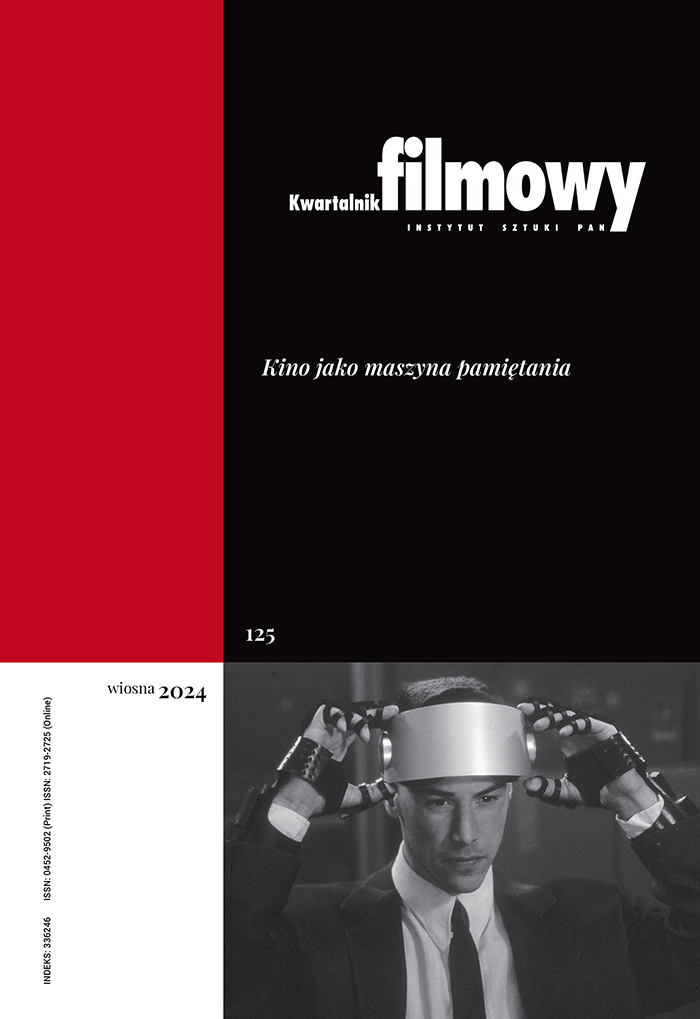Interrupted Inscription Project: Relations Between Space and Its Actors in Pedro Costa’s “Letters From Fontainhas”
Abstract
A typical movie scenery is to reflect the dilemmas of the hero and set the time and place of the action. The case of Fontainhas is special. Pedro Costa devoted three of his films to the topic: Ossos, No Quarto da Vanda and Juventude em Marcha. Space affects people and shapes their relationships and activities. The relationship with the environment is highlighted by the filming technique. In Ossos, the outskirts of Lisbon remind us of a dark maze of back rooms, and the newly formed settlement of Juventude gives the impression of a surface of an alien planet, where it is difficult to restore old relations within a group of immigrants from Cabo Verde. Crossing the boundaries between a fiction film and documentary, the director builds the film on a foundation of strong contrasts between light and shadow, and on claustrophobia and statics. From the perspective of urban planning, Costa’s films talk about the gap between social settlement projects and spontaneous settlements in urban barrios. It is the gap that clearly shows the need for a grass-roots initiative - and ethnic culture of the residents - in creating a new environment. The text is dedicated to that need.
Keywords:
Pedro Costa, Portugal cinema, FontainhasReferences
Carter Paul, Mythforms: Techniques of Migrant Place-Making, w: Drifting: Architecture and Migrancy, red. S. Cairns, Routledge, New York 2004, s. 89, 91.
Google Scholar
Lethen Helmut, Between the barrier and the sieve: finding the border in the Modern Movement, w: Narrating Architecture: A Retrospective, red. J. Madge, A. Peckham, Routledge, London, New York 2006, s. 161.
Google Scholar
Steele James, An Architecture for People. The Complete Works of Hassan Fathy, Thames and Hudson, London 1997, s. 11.
Google Scholar
Authors
Maciej Stasiowskikwartalnik.filmowy@ispan.pl
Jagiellonian University Poland
Doktorant (w dziedzinie filmoznawstwa) na Wydziale Zarządzania i Komunikacji Społecznej UJ; zajmuje się potencjałem kina jako medium do realizacji projektów architektury niemożliwej. Redaktor czasopisma o tematyce filmowej „16mm”. Publikuje w „EKRANach”, „Kinie” oraz w Internecie (Dwutygodnik, Onet, Mrówkojad, e-Splot, Stopklatka).
Statistics
Abstract views: 412PDF downloads: 154
License
Copyright (c) 2012 Maciej Stasiowski

This work is licensed under a Creative Commons Attribution 4.0 International License.
The author grants the publisher a royalty-free non-exclusive licence (CC BY 4.0) to use the article in Kwartalnik Filmowy, retains full copyright, and agrees to identify the work as first having been published in Kwartalnik Filmowy should it be published or used again (download licence agreement). The journal is published under the CC BY 4.0 licence. By submitting an article, the author agrees to make it available under this licence.
In issues from 105-106 (2019) to 119 (2022) all articles were published under the CC BY-NC-ND 4.0 licence. During this period the authors granted a royalty-free non-exclusive licence (CC BY-ND 4.0) to use their article in „Kwartalnik Filmowy”, retained full copyright, and agreed to identify the work as first having been published in our journal should it be published or used again.
Most read articles by the same author(s)
- Maciej Stasiowski, No Figures in the Landscape: Post-Anthropocentric Typologies of Architectural Settings in Science-Fiction Films , Kwartalnik Filmowy: No. 110 (2020): Beyond Human Being
- Maciej Stasiowski, Heathen Camerawork: Crossing the Liminal Border with “The Third Day” Cinematography , Kwartalnik Filmowy: No. 118 (2022): One Take
- Maciej Stasiowski, Built as Rain. Film Analysis of Unbuildable Architectural Speculations – a Case Study of „Instant City” (dir. Peter Cook and Ron Herron, 1968) and „The Zero Theorem” (dir. Terry Gilliam, 2013) , Kwartalnik Filmowy: No. 109 (2020): Architectural Space in Film
- Maciej Stasiowski, Nooks and Crannies in Visible Cities: 3D Re-imagining Techniques for Archaeology and Architecture in Film , Kwartalnik Filmowy: No. 113 (2021): Film and Technology
- Maciej Stasiowski, Abrasion (Mapping of Basinski): Spatial Memory Structures in Grant Gee’s “Patience (After Sebald)”, Paul Bush’s “Babeldom” and Sophie Fiennes’ “Over Your Cities Grass Will Grow” , Kwartalnik Filmowy: No. 86 (2014): Dimensions of Time
- Maciej Stasiowski, ...a Step Across the Border: Transcultural Spaces of Musical Documentary , Kwartalnik Filmowy: No. 80 (2012): Film at the Meeting Point of Cultures
- Maciej Stasiowski, [cinem]architectonics: The Narrativeness of Architectural Designs and Experimental Animations Dealing with Space as a Continuation of the Speculative Drawing Tradition , Kwartalnik Filmowy: No. 82 (2013): Experiment: Film and Audiovisual Arts
- Maciej Stasiowski, “Celle qui avance”: On Becoming Still in the Act, Reading and Rereading of “Gradiva”, Not Only by Alain Robbe-Grillet , Kwartalnik Filmowy: No. 89-90 (2015): Redefinitions of the Classics











